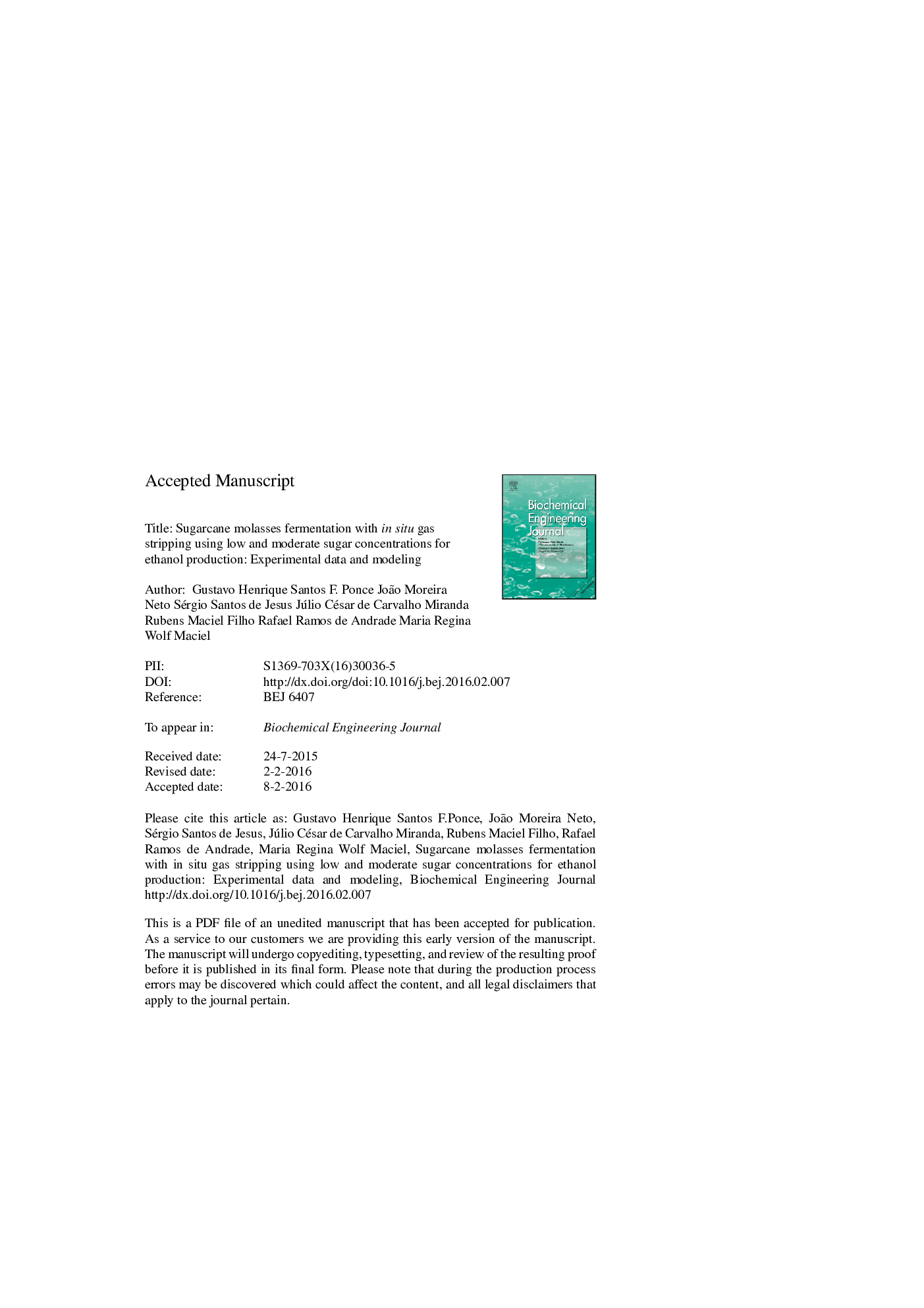| Article ID | Journal | Published Year | Pages | File Type |
|---|---|---|---|---|
| 6483951 | Biochemical Engineering Journal | 2016 | 29 Pages |
Abstract
In this study, the feasibility of gas stripping technique was studied for Brazilian sugarcane industry conditions: Saccharomyces cerevisiae yeast and sugarcane molasses as raw material. The experimental trials were carried out in batch into two levels of gas flow rate (4 and 6 L/min) and sugar concentration (170 and 250 g/L). Results showed that the gas stripping technique was effective since ethanol concentration was maintained below threshold of toxicity (no more than 60 g/L in all cases), as well as sugar containing was consumed almost completely. Furthermore, a mixed mathematical model combining a complex term for the ethanol entrainment from gas stripping fermentation was proposed based in robust models for sugarcane molasses previously presented in literature. ParametersYpx, μmax, Pmax, Yx, Xmax were estimated and presented itself within previous ranges validated for sugarcane molasses. The methodology of parameters estimation using genetic algorithms showed to have good performance, and the model was able to predict the data set of glucose, biomass and ethanol concentrations in low and high levels of sugarcane molasses in the broth, with only one set of parameters.
Related Topics
Physical Sciences and Engineering
Chemical Engineering
Bioengineering
Authors
Gustavo Henrique Santos F. Ponce, João Moreira Neto, Sérgio Santos De Jesus, Júlio César de Carvalho Miranda, Rubens Maciel Filho, Rafael Ramos de Andrade, Maria Regina Wolf Maciel,
